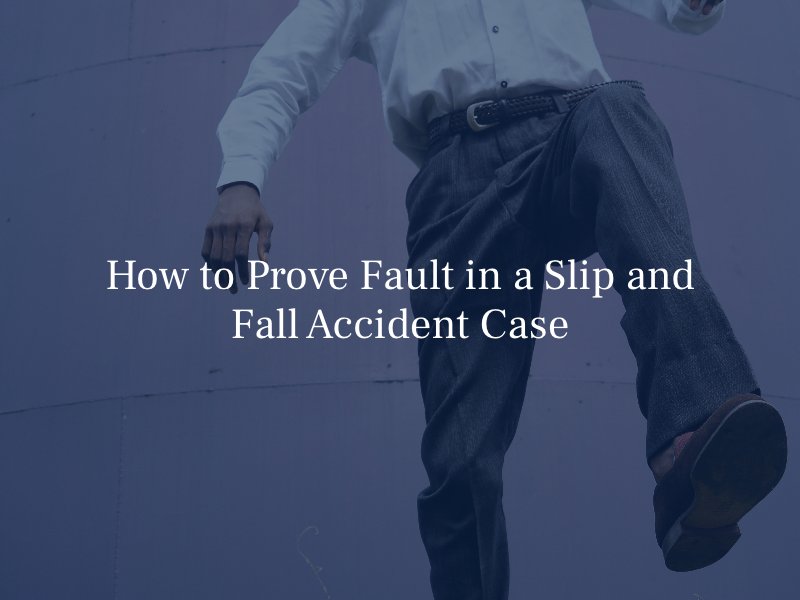How to Prove Fault in a Slip and Fall Accident Case
May 25, 2023 Posted In Personal Injury
When slip and fall accidents occur due to someone else’s negligence, it is crucial to establish fault in order to seek compensation for medical expenses, lost wages, and other damages. Proving fault requires evidence of the following elements of negligence.

Duty of Care
The first step in proving negligence is demonstrating that the property owner or occupier owed you a duty of care. In general, property owners have a legal obligation to maintain a safe environment for visitors. However, this duty may vary depending on the type of property and whether you were legally allowed on the premises.
Breach of Duty
To prove negligence, you must establish that the property owner or manager breached their duty of care. This involves demonstrating that they failed to take reasonable steps to prevent or address hazardous conditions. Examples of breaches may include inadequate maintenance, failure to warn of potential dangers or improper cleaning practices.
Knowledge of the Hazardous Condition
Proving that the property owner had knowledge (actual or constructive) of the hazardous condition is crucial. Actual knowledge means they were aware of the danger, while constructive knowledge implies that they should have known about it through regular inspections or by following industry standards.
Foreseeability
Establishing foreseeability is essential in slip and fall cases. It involves showing that a reasonable person in the property owner’s position could have anticipated the potential risk. For instance, if a spill had been left unattended for an extended period, it could be argued that the owner should have foreseen the danger it posed.
Causation
You must establish a causal connection between the hazardous condition and your injuries. This requires evidence that the dangerous condition on the property directly caused your slip and fall accident and resulting harm. Medical records, eyewitness testimony, and expert opinions can strengthen your case in proving causation.
Damages
The final element of negligence is proving that you have suffered damages due to the slip and fall accident. Damages can include medical expenses, lost wages, pain and suffering, emotional distress, and any other losses or harms caused by the incident. Documenting and providing evidence of your damages is crucial to support your claim.
The Importance of Evidence
Evidence plays a crucial role in proving fault in a slip and fall case. For example, photographs, videos, or even physical samples can help demonstrate the existence of a hazardous condition that caused the slip and fall accident. Additionally, photos may show an absence of warnings, which can be compelling in showing the owner’s failure to fulfill their duty.
Witness statements provide unbiased accounts of the accident and can significantly strengthen your evidence of liability. Additionally, medical records provide a clear connection between the accident and the damages you have suffered.
Comparative Negligence
In California, the concept of pure comparative negligence applies to Riverside slip and fall cases. This means that if you caused or contributed to the accident, your compensation will be reduced by your degree of fault. However, as long as you can prove that the property owner’s negligence was the primary cause, you may still be entitled to compensation that fully covers your losses.